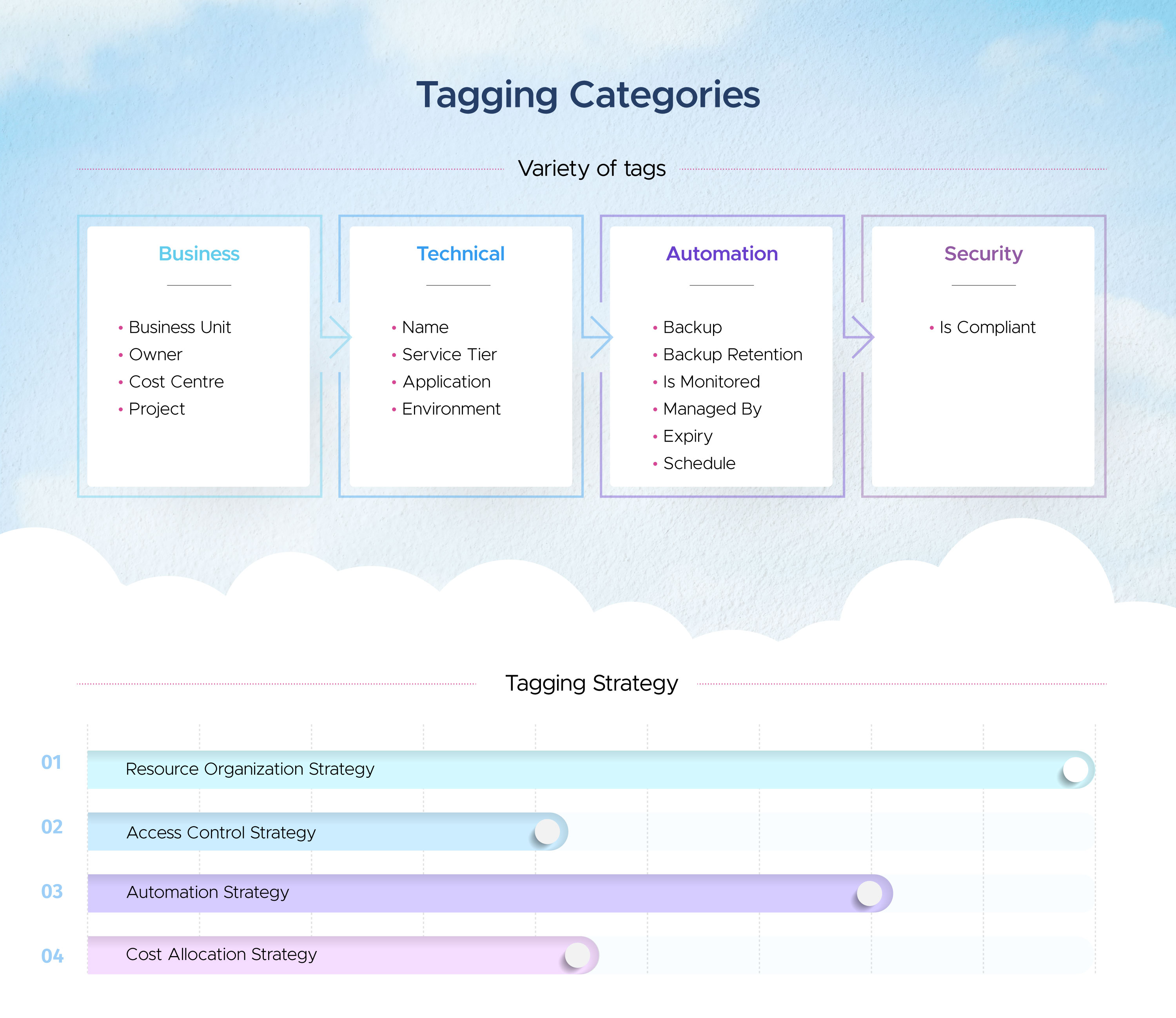In the ever-evolving world of cloud computing, managing costs efficiently is a critical concern for organizations leveraging Amazon Web Services (AWS). AWS offers a plethora of tools and features to help organizations allocate and optimize their costs. Among the essential practices for effective AWS cloud cost management, strategic tagging stands out. In this blog, we will delve into the intricate details of tagging's importance for AWS cost allocation and optimization. We will explore comprehensive best practices for AWS tagging, different tagging strategies for cost allocation, and strategies for cost optimization in AWS through effective tagging.
What is AWS Cost Allocation?
Cost allocation in AWS refers to the process of attributing costs to specific resources or cost centers within an AWS infrastructure. It provides insights into the distribution of expenses across different services, allowing organizations to gain a deeper understanding of their cost drivers and optimize their resource utilization accordingly.
What is AWS Cost Optimization?
Cost optimization in AWS involves maximizing the value derived from AWS services while minimizing expenses. It encompasses strategies and practices aimed at achieving optimal cost-efficiency without compromising performance or functionality. Effective tagging plays a vital role in identifying opportunities for cost optimization in AWS.
What answers right tagging can provide you?
- Direction where AWS budgeting is going
- Analysis of resource usage for forecasting purpose
- Find hidden areas of cost to eliminate unused resources
- Chargeback - Relate utilization & expenses to business units, departments and projects
- To analyse resources that require updating
- Security and compliance related tags can help in assessment of overall security and also providing a framework for who is authorized/unauthorized to work on resources. Eg. How many servers are of old operating system, How many services are being monitored?
- To identify the most expensive feature of product
- The most expensive project in organization vs its worth
- Which area the customers are more interested into
- Per customer cost of the product
Here are some of the best practices
1. Establishing Tagging Standards
- Identify the right tags for your resources keeping in mind the purpose why you want to include the specific tag key
- Discuss within your cross functional teams and come up with standard tags
- Standardise the number of tags, their naming convention. Avoid duplications and inconsistencies
- Publish the tagging standards in the organization so that people are aware
- Tag resources to satisfy all criteria
- Name eg. prod-<project>-<module>-app1
- Project eg. project-a, project-b
- BusinessUnit eg. engineering, finance, analytics
- ServiceTier eg. web, database, cache
- Application eg. nginx, paymentservice, login, dashboard
- Schedule eg. 24x7, 6 am - 9 pm UTC
- Environment eg. dev/qa/prod
- BackupRetention eg. 365, 12 (with standard time unit)
- Backup eg. True/False
- Compliance eg. true/false (if doesn’t meet any of the security standards or can be broken further to ComplianceDataAtRestEnabled, ComplianceTerminationProtectionEnabled, ComplianceHasSecurityAgentInstalled)
- CostCentre eg. team:finance, team:engineering, team:digitalMarketing, team:module-A
- IsMonitored eg. true/false
- Expiry eg. 30-07-2024
- Owner eg. team-platform-engineering@company.com
- ManagedBy eg. terraform, cloudformation, awscli, toolname
2. Automation for Tagging
Leveraging automation tools and services simplifies and streamlines the process of applying tags to resources. AWS provides services like AWS CloudFormation, AWS Config Rules, AWS Lambda, Resource Groups, Tag Editors, AWS CLI etc which enable organizations to automate tagging workflows. Automation ensures accurate and timely application of tags, reducing human error and saving time. This needs to be ensured that any automation tool being used is well aware of standard tags to be configured.
3. Tagging Policy and Governance
Formulating tagging policies and guidelines is essential for enforcing compliance and consistency throughout the AWS cloud cost management practices. These policies define the required tags for different resource types and specify the consequences of non-compliance. By establishing clear policies and permissions, organizations can ensure that all resources are appropriately tagged, adhering to tagging standards and facilitating effective cost allocation. The practices should ensure:
- Restrict who can access a resource
- Receive notifications automatically when tags are not proper or missing
- Avoid alert fatigue by limiting the number of alerts
- As per need basis, review, revise, and realign tagging best practices
- Put deny policies in launching the resources if they are not compliant
Let's take a look at various tagging strategies and how they align with tags grouping

Cost Optimization Reporting and Analysis
You can use AWS Cost Explorer and detailed billing reports to break down AWS costs by tags. Tags can include business or technical dimensions, allowing you to associate costs with different aspects such as cost centers, projects, applications, environments, or compliance programs.
Leveraging AWS Cost Explorer and Cost and Usage Reports, organizations can gain insights into cloud cost savings opportunities. These tools provide comprehensive reports and visualizations that allow businesses to analyze tagged resources, identify cost trends, and track spending patterns. By regularly reviewing and analyzing cost optimization reports, organizations can make informed decisions and take appropriate actions to optimize costs effectively.
You can refer AWS standard tagging guidelines here
Conclusion
Effective tagging strategies play a crucial role in AWS cost allocation and optimization. By following best practices such as establishing consistent tagging standards, leveraging automation for tagging, and implementing tagging policies and governance, organizations can ensure accurate cost allocation and AWS cost reduction. Resource-based tagging, cost center-based tagging, environment-based tagging, and project-based tagging facilitate precise cost allocation and provide valuable insights for decision-making. Usage-based tagging, expiration-based tagging, right-sizing with tagging, and cost optimization reporting help identify and address cost optimization opportunities. By adopting these strategies, organizations can achieve better cost efficiency, maximize the value of their AWS investments, and drive overall financial success.
CloudKeeper helps you scale your AWS infrastructure and cloud applications, while delivering cloud cost savings on your entire AWS bills up to 25%. Sounds too good to be true? Talk to our experts today!
